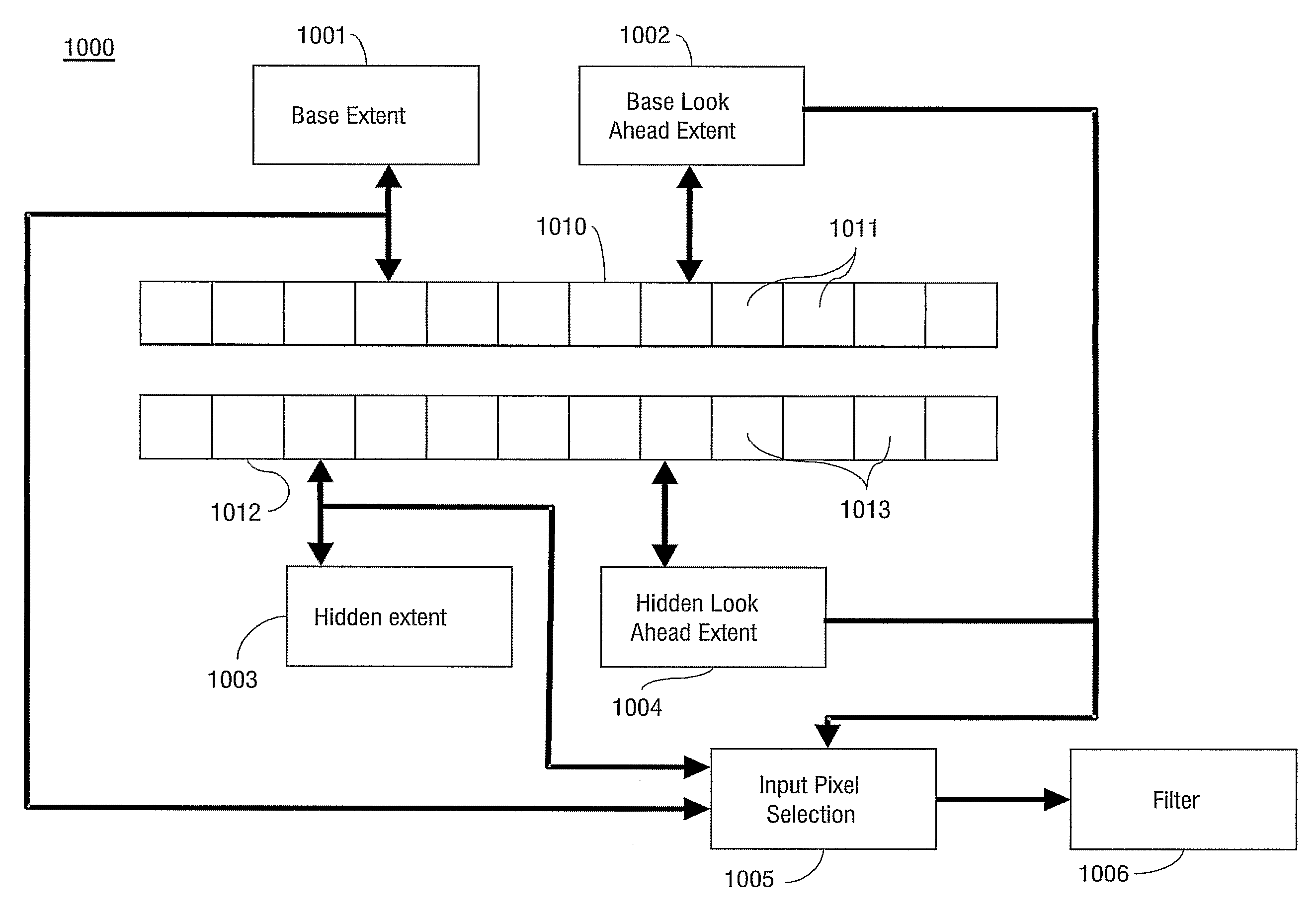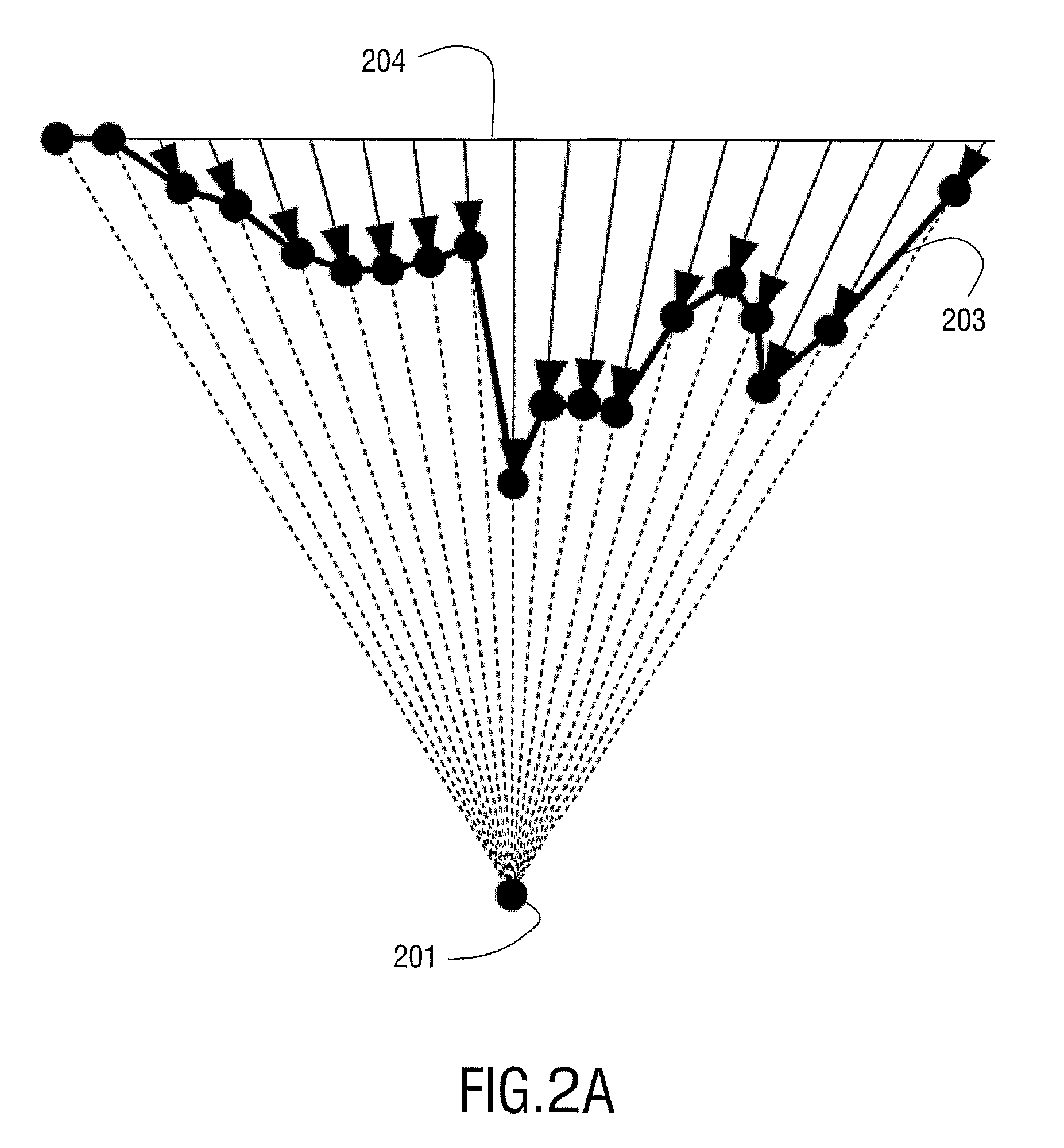Ghost artifact reduction for rendering 2.5D graphics
a technology of ghost artifacts and rendering, applied in the field of image processing systems, can solve problems such as ghost artifacts, and achieve the effect of easy detection of occlusion
- Summary
- Abstract
- Description
- Claims
- Application Information
AI Technical Summary
Benefits of technology
Problems solved by technology
Method used
Image
Examples
Embodiment Construction
[0026]To explain the system according to the invention, with reference to FIGS. 1 to 5, depth dependent transformation will be described. In this general description a pixel is regarded as a point (dimensionless). FIG. 1 shows a block diagram of a conventional system in which the image processing system according to the invention may advantageously be used. The conventional system comprises a memory 100, such as a graphics memory, for storing a 2D input image 101. The input image 101 is comprised of an array of pixels divided in rows and columns. For each pixel a pixel value is given. Various ways of representing a pixel value are well known, such as an RGB (Red, Green, Blue) or YUV coding. The pixel value may be stored in full, e.g. using 16 or 24 bits per pixel. Alternatively, a Color Look-Up Table (CLUT) scheme may be used to code the pixel value using fewer bits, e.g. 8 bits. In addition to the pixel value, for each pixel a depth value is stored in the memory 100 as the input de...
PUM
 Login to View More
Login to View More Abstract
Description
Claims
Application Information
 Login to View More
Login to View More - R&D
- Intellectual Property
- Life Sciences
- Materials
- Tech Scout
- Unparalleled Data Quality
- Higher Quality Content
- 60% Fewer Hallucinations
Browse by: Latest US Patents, China's latest patents, Technical Efficacy Thesaurus, Application Domain, Technology Topic, Popular Technical Reports.
© 2025 PatSnap. All rights reserved.Legal|Privacy policy|Modern Slavery Act Transparency Statement|Sitemap|About US| Contact US: help@patsnap.com



